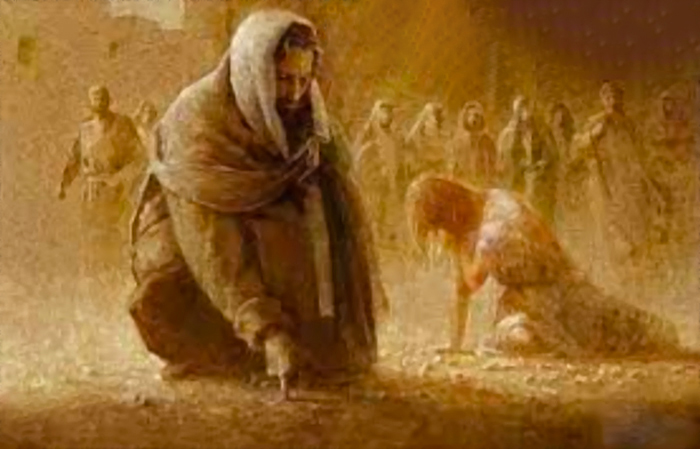
Our Gospel today tells about the woman that scribes and Pharisees caught in adultery. Imagine where they were standing when they caught her in the very act. The voyeurism and perversion of these men! Then they come en masse, in the terrible enthusiasm of a mob, and they present the case to Jesus. Now, what does Jesus do in the face of this violent mob? First, he writes on the ground. The mysterious writing might indicate the listing of the sins of each person in the group. As he said in another Gospel, “Remove the plank in your own eye, and then you can see more clearly the speck in your brother’s eye.” And then he says, “Let the one among you who is without sin be the first to cast a stone at her.” He forces them to turn their accusing glance inward, where it belongs. Instead of projecting their violence outward on a scapegoat, they should honestly name and confront the dysfunction within themselves. Like all the stories in the Gospels, this story foreshadows the great story toward which we are tending. Jesus will be put to death by a mob bent on scapegoating violence.
